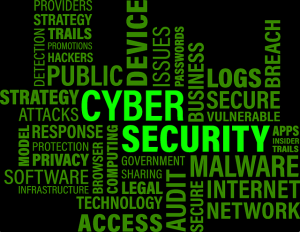What Is Kiosk Mode and How to Enable It?

Kiosk mode is a specialized setting on digital devices that limits user interaction to specific applications or functions, effectively turning the device into a dedicated interactive kiosk. This mode is crucial for providing self-service options in various industries such as retail, hospitality, and education, allowing for efficient customer service, information dissemination, and transaction processing. By restricting access to the full capabilities of the device, kiosk mode enhances user experience, security, and operational efficiency in environments ranging from stores and hotels to schools and public spaces.
What is Kiosk Mode?
Kiosk mode is a configuration that locks down a device to run a single application or a specific set of functions, effectively transforming it into a public access terminal or interactive kiosk. Key features include operating in a full-screen mode to prevent users from accessing other applications or system settings, and restricted user access to ensure that users can interact only with the allowed functionalities. Unlike standard operating modes, where users have broader control and access to the device’s capabilities, kiosk mode focuses on delivering a targeted, secure, and user-friendly experience. This mode is designed to minimize tampering, enhance security, and provide a streamlined interface for specific tasks or services, making it ideal for public use in various settings.
Benefits of Using Kiosk Mode
Utilizing kiosk mode brings significant benefits across multiple domains, enhancing both operational efficiency and user satisfaction. One of the primary advantages is the enhanced user experience it offers; by simplifying interactions, users can navigate services and perform tasks with ease, making the process more intuitive and less time-consuming. This mode ensures that users are guided through a streamlined, focused interface, reducing confusion and improving overall service satisfaction.
From a security standpoint, kiosk mode is invaluable. By restricting access to non-essential applications and system features, it minimizes the risk of unauthorized use and protects sensitive information. This lockdown feature is crucial in preventing tampering and maintaining the integrity of the device and its data.
Another significant benefit is the potential for reduced staffing costs. Kiosk mode enables automation of routine tasks such as ticket sales, check-ins, and order placements, which traditionally require human intervention. This automation not only speeds up transactions but also allows businesses to reallocate human resources to more critical areas, enhancing service quality and operational efficiency.
Industries such as retail, hospitality, healthcare, and education reap the benefits of kiosk mode. In retail, self-service checkouts and information kiosks improve shopping experiences. In hospitality, automated check-ins and information stations streamline operations. Healthcare benefits from self-service registration and information kiosks, reducing wait times and administrative burdens. Educational institutions utilize kiosk mode for information dissemination and administrative tasks, making campus services more accessible to students and staff. Across these sectors, kiosk mode proves to be a versatile tool, improving service delivery and operational efficiency.
Common Use Cases for Kiosk Mode
Kiosk mode is widely adopted across various sectors for its ability to streamline processes and enhance user engagement. In public spaces such as airports, museums, and tourist spots, information stations operating in kiosk mode provide visitors with easy access to maps, directions, exhibit details, and local attractions. These kiosks serve as interactive guides, enhancing the visitor experience by delivering relevant information efficiently.
In the retail and restaurant industries, self-service checkouts and order stations have become increasingly common. These kiosks reduce wait times, allowing customers to browse menus, customize orders, and make payments without the need for cashier assistance. This not only speeds up the service but also allows businesses to handle peak times more effectively.
Hotels and healthcare facilities utilize registration and check-in kiosks to streamline the arrival process. Guests and patients can check in, update personal information, and complete necessary paperwork, significantly reducing administrative workload and improving the speed and quality of service.
Educational tools and interactive learning stations in schools and museums provide engaging, self-paced learning experiences. These kiosks offer access to educational content, interactive lessons, and quizzes, making learning more dynamic and accessible. By integrating kiosk mode, these institutions can offer rich, interactive content without the risk of users navigating away from the intended material, ensuring a focused and effective learning environment.
How to Enable Kiosk Mode
Enabling Kiosk Mode on Windows
- Setting up Assigned Access:
– Open the Settings app and navigate to Accounts > Family & other users.
– Under Set up a kiosk, click Assigned access and then Add a kiosk.
– Click Get started and enter a name for the kiosk account.
– Select an app from the list of installed apps to run in kiosk mode. Only apps that support kiosk mode will appear here.
– Follow the prompts to configure the kiosk account and app.
- Configuring Apps for Kiosk Mode:
– Apps need to be Universal Windows Platform (UWP) apps to work in Assigned Access mode.
– Once an app is selected, you can configure its settings through the app’s own configuration options or group policies if available.
Setting Up Kiosk Mode on Android Devices
- Using Android’s Built-in Features for Kiosk Mode:
– Android devices offer a screen pinning feature that can be used for kiosk mode. To enable, go to Settings > Security & location > Advanced > Screen pinning, and turn it on.
– Once enabled, open the app you want to pin, press the Overview button, and then the pin icon.
- Third-party Applications for Enhanced Control:
– For more control, third-party apps like SureLock or Kioware can be installed, offering features like remote management, custom branding, and more.
Implementing Kiosk Mode on iOS Devices
- Guided Access Feature and Its Limitations:
– iOS’s Guided Access feature limits the device to a single app. Enable it in Settings > Accessibility > Guided Access.
– Start Guided Access by triple-clicking the Home/Side button within the app you want to lock the device into.
- Configuring Single App Mode through Apple Configurator:
– For a more permanent solution, use Apple Configurator to put a device in Single App Mode, which requires connecting the device to a Mac and configuring it through the Configurator software.
Kiosk Mode on Other Platforms
Linux or Chrome OS:
– Linux: Various solutions exist depending on the distribution. For example, using kiosk extensions for browsers or configuring the desktop environment to restrict user actions.
– Chrome OS: Chrome devices can be set up in Single App Kiosk Mode using the Google Admin console, requiring enrollment in Chrome Enterprise or Chrome Education Upgrade. This allows devices to run a single app full screen and be managed remotely.
Implementing kiosk mode across different platforms enables businesses and organizations to deploy interactive kiosks efficiently, enhancing user experience and operational efficiency. Each platform offers unique features and configurations to suit various use cases and requirements.
Conclusion
Kiosk mode stands out for its ability to streamline user interactions, bolster security, and improve operational efficiency across numerous settings. Its versatility in catering to various industries, from retail to education, underscores its value in modern digital environments. Businesses and institutions are encouraged to leverage kiosk mode to elevate customer service, ensure secure transactions, and optimize resource management, demonstrating its pivotal role in enhancing user experiences and operational practices.






